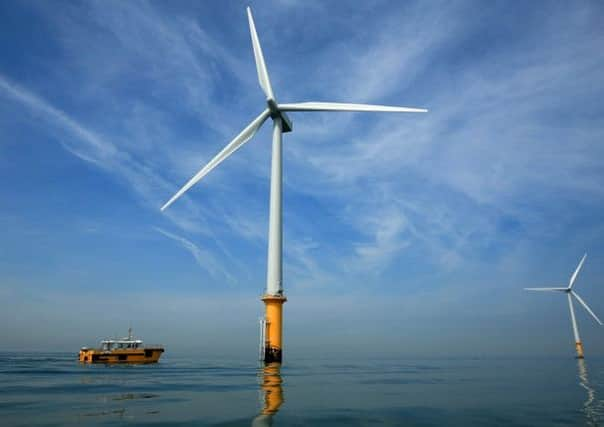Understand fracking before it arrives


In 2003, the UK was a net exporter of gas; now we are a net importer. Forecasters predict by 2025 we will be importing 70 per cent of our gas consumption, a statistic based on forecasts of North Sea gas reserves and the assumption no fracking occurs.
The renewables industry has been hit with the uncertainty of Electricity Market Reform and some offshore projects being put on hold due to the high costs of construction and engineering issues. For instance, Scottish Power’s last month that it was abandoning the massive £5.4 billion Argyll Array Offshore Wind Farm off the coast of Tiree, saying offshore wind technology would not make this viable within the next decade.
Advertisement
Hide AdAdvertisement
Hide AdOn the other hand, interest in shale gas is increasing. The British Geological Society confirmed last year that one of the world’s largest shale gas fields (the Bowland Shale) is located beneath Lancashire and Yorkshire and French oil and gas giant Total recently acquired 40 per cent of two shale gas exploration licences in the East Midlands, at an outlay of £30-£50 million. So what is the situation in Scotland?
The likely shale gas reserves are located in what is known as the Midland Valley – broadly speaking this is the Central Belt of Scotland (including Fife) – in traditional coal mining areas and the government has commissioned the British Geological Society to ascertain potential reserves. Dart Energy already has some licences in Scotland, the next round of licences is due to be granted this year and the Department of Energy & Climate Change (DECC) is carrying out the necessary strategic environmental assessment.
There are environmental concerns with fracking. A “mini earthquake” in Blackpool was attributed to fracking and in America there are qualms about the volume of water required for the process plus its potential to cause contamination.
However, considering the huge positive economic impact of fracking experienced by the US, one could conclude that the likelihood of fracking in the UK and Scotland has to be high. Whether or not you agree with fracking we may have no choice, in which case we may as well understand who are the likely winners and losers.
o Developers: winners. The Developer applies for a licence to extract shale gas, a reserved mineral to the government in terms of The Petroleum Act 1998, and is granted a PEDL (UK Petroleum Exploration and Development Licence). In addition they need planning permission, SEPA consent, consent from the Coal Authority if drilling encroaches on coal seams and well consent for drilling; all revenues go to developer, less taxes etc; no need to share with landowner unless land rights required. o Landowners/local residents: losers. Potential disruption to land with drilling, road traffic disruption around site and noise of drills; water pollution risk – there are concerns in several US states about water close to fracking sites being polluted, including arsenic. o Landowners: winners. There may be potential for land to be leased, or ancillary rights to be granted by, the landowner. This needs careful consideration as to what rights can be obtained by the developer in terms of the current regulations. o Communities: winners. Potential revenues – DECC recently issued a report indicating that communities should receive £100,000 in community benefits at the initial exploration/appraisal stage; at the production stage communities would receive 1 per cent of revenues, providing £5-10 million per well, spread over 25 years with most received within the first ten years; job creation – could be significant according to various reports. The Institute of Directors estimate up to 74,000 jobs (direct and indirect). o Communities: Losers. Potential damage to local land and environmental issues (as above), although The Royal Society and Royal Academy of Engineering have concluded that the health, safety and environmental risks can be managed effectively in the UK by implementing and enforcing best operational practice. o Differences to date between Scotland and England: In England some revenue passed back to local Councils – Scotland has not followed suit; planning in England – the law has been changed so that there is no requirement for landowners to be notified where drilling is occurring under their land. In Scotland this requirement remains; significant political support in England – less so in Scotland.
In all probability fracking is en route. It may take a few years for the industry to develop but if America’s industry keeps expanding in the same manner it is most likely the UK will follow suit. The UK government is proactive in promoting the industry and if it is successful south of the Border then the likelihood is Scotland would follow.
• Kirsty Macpherson is head of the energy, climate change and natural resources group at Gillespie Macandrew www.gillespiemacandrew.co.uk
SEE ALSO